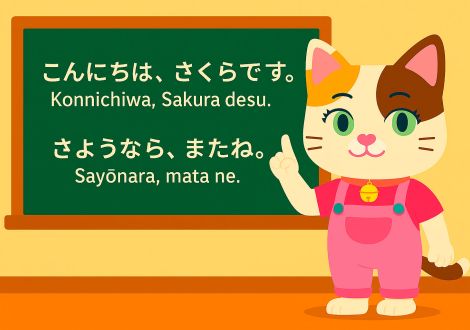One characteristic of Japanese pronunciation is the basic rhythmic unit of sound or sound break known as a "mora" (a timing unit in phonology). Moras are separated by sound duration. This is slightly different from syllables, where sound length is based on the number of vowels. Moras can be classified as follows:
1. CV (consonant + vowel)
Japanese has five vowels: /a/, /i/, /u/, /e/, and /o/, which are the most basic sounds. The consonant phonemes include /p/, /b/, /d/, /k/, /g/, /t/, /m/, /n/, /r/, /s/, /z/, /h/, /j/, and /w/, along with special characters like the soku-on (っ) and hatsu-on (ん).
2. V (Chō-on, long vowel sounds)
Chō-on refers to the pronunciation of long vowels produced by doubling vowel sounds. The common vowel combinations are:
| Examples | ||
|---|---|---|
| double kana | vowel | rōmaji |
| ああ | aa | ā |
| いい | ii | ī |
| うう | uu | ū |
| ええ | ee | ē |
| えい | ei | ē |
| おお | oo | ō |
| おう | ou | ō |
• In rōmaji (the Roman alphabet method for writing Japanese pronunciation), a horizontal bar is placed over vowels to indicate length (Hepburn system). For example:
| Example | ||
|---|---|---|
| kana | rōmaji | rōmaji (with macron) |
| とうきょう | toukyou | tōkyō |
• In hiragana, the "―" symbol is not typically used. Instead, the characters representing each sound are repeated to indicate a long vowel. For example:
| Examples | ||
|---|---|---|
| kana | rōmaji | meaning |
| おにいさん | oniisan [onīsan] | older brother |
| おねえさん | oneesan [onēsan] | older sister |
| いもうと | imouto [imōto] | younger sister |
• The symbol "―" (chōonpu) is mainly used in katakana to indicate a long vowel. For example:
| Example | ||
|---|---|---|
| kana | rōmaji | meaning |
| テーブル | teeburu [tēburu] | table |
3. /q/ (Soku-on, a glottal stop)
In general, the soku-on (っ) indicates a pause or a glottal stop before a consonant from the k, g, s, z, t, d, h, b, or p groups, articulated at the same point of closure or friction as the following consonant. For example: がっこう (gakkō).
| Example | ||
|---|---|---|
| kana | rōmaji | meaning |
| がっこう | gakkou [gakkō] | school |
4. /N/ (Hatsu-on, nasal sounds)
Hatsu-on (ん) is a type of phoneme represented by the letter "n". Before the consonants /p/, /b/, and /m/, it is pronounced [m]. Before /t/, /d/, /r/, and /n/, it is [n]. Before /ni/, /nya/, /nyu/, and /nyo/, it becomes [ɲ], and before /k/ and /g/, it is [ŋ]. Before vowels and consonants like /s/, /h/, /j/, and /w/, it is often realized as a nasal vowel. For example:
| Examples | ||
|---|---|---|
| kana | rōmaji | meaning |
| かんぱい | kanpai [kampai] | Cheers! / Toast! |
| ほんとう | hontou [hontō] | true / really |
| こんにゃく | konnyaku [koɲnyaku] | konjac (edible vegetable gelatin) |
| まんが | manga [maŋga] | manga (Japanese comic) |
| パンや | panya [paĩja] | bakery |
5. CjV (Yō-on. Combined sounds: consonant ending in /i/ + ya, yu, or yo)
Yō-on are represented using a kana (hiragana or katakana) ending in the /i/ sound, like ki (き), plus a smaller version of one of the three kana ya (や), yu (ゆ), or yo (よ). For example, “kyō” (today) is written きょう, using a small version of the kana for “yo” (ょ).





